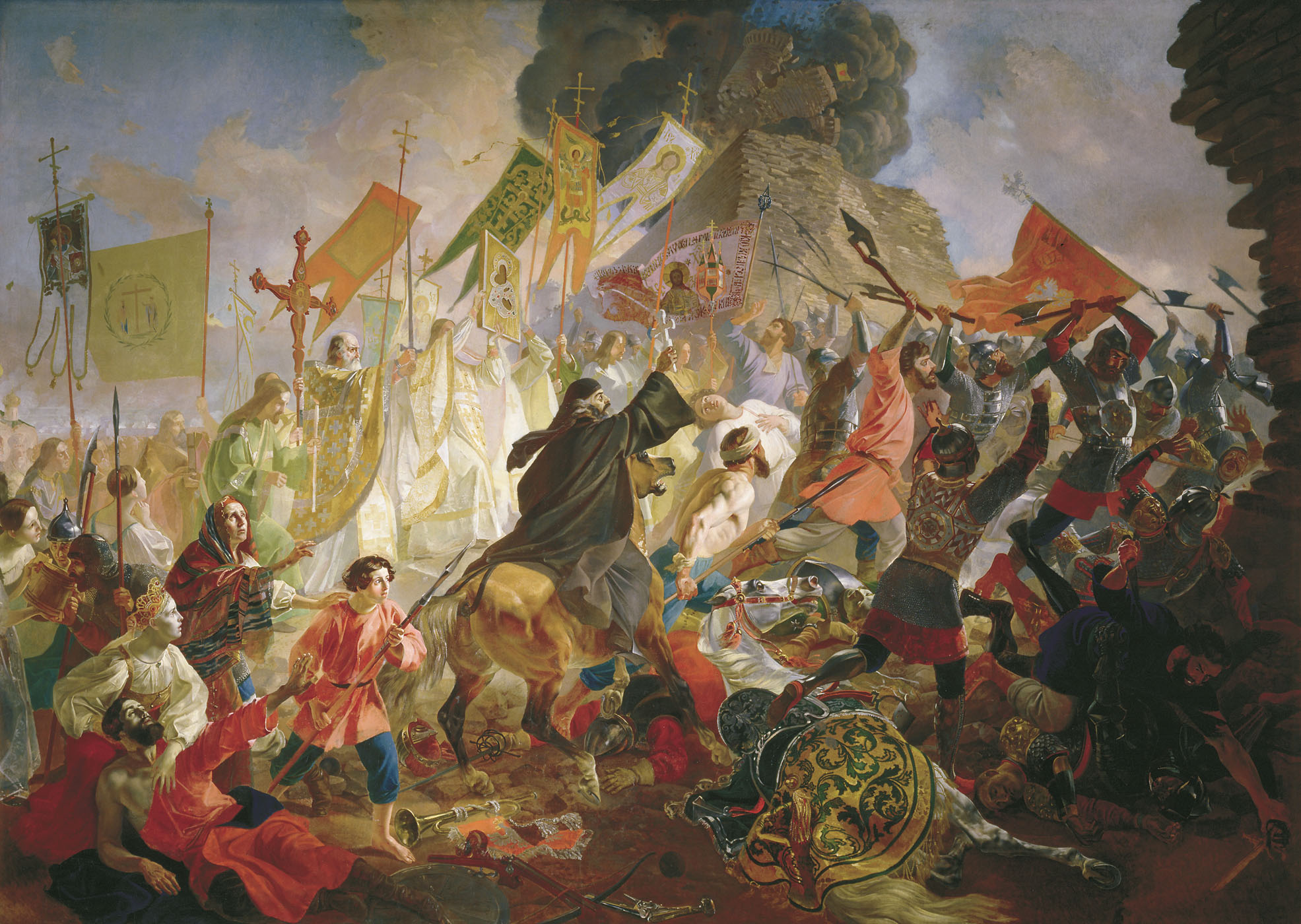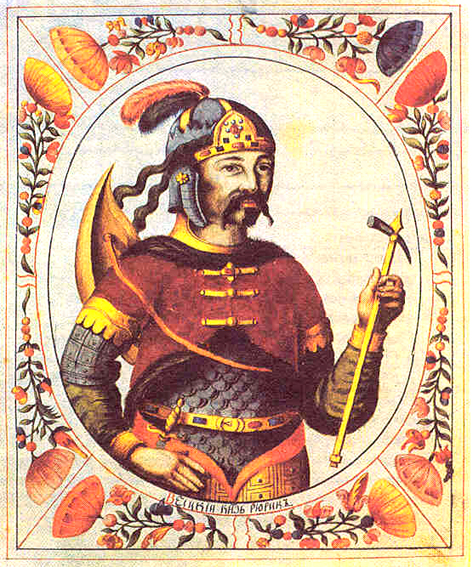|
Pechorsky District
Pechorsky District (russian: Печо́рский райо́н) is an administrativeLaw #833-oz and municipalLaw #420-oz district (raion), one of the twenty-four in Pskov Oblast, Russia. It is located in the northwest of the oblast and borders with Pskovsky District in the northwest, Palkinsky District in the southeast, Alūksne municipality of Latvia in the southwest, and with Võru and Põlva Counties of Estonia in the northwest. Lake Peipus limits the district from the north. The area of the district is . Its administrative center is the town of Pechory. Population: 25,300 ( 2002 Census); The population of Pechory accounts for 50.6% of the district's total population. Geography Almost the whole of the district lies in the basin of Lake Peipus. The rivers in the east flow into the Velikaya River, whereas the rivers in the northwest, including the Piusa River, flow into Lake Peipus directly. Minor areas in the southwest of the district belong to the basin of the Pededze Rive ... [...More Info...] [...Related Items...] OR: [Wikipedia] [Google] [Baidu] |
Pskov Oblast
Pskov Oblast (russian: Пско́вская о́бласть, ') is a federal subject of Russia (an oblast), located in the west of the country. Its administrative center is the city of Pskov. As of the 2010 Census, its population was 673,423. Geography Pskov Oblast is the westernmost federal subject of contiguous Russia ( Kaliningrad Oblast, while located further to the west, is an exclave).1september.ru. Д. В. Заяц (D. V. Zayats).Псковская область (''Pskov Oblast''). It borders with Leningrad Oblast in the north, Novgorod Oblast in the east, Tver and Smolensk Oblasts in the southeast, Vitebsk Oblast of Belarus in the south, and with the counties of Latvia ( Alūksne Municipality, Balvi Municipality, and Ludza Municipality) and Estonia ( Võru County) in the west. In the northwest, Pskov Oblast is limited by Lake Peipus, which makes up most of the state border with Estonia. The oblast is located in the Baltic Sea drainage basin, mostly in ... [...More Info...] [...Related Items...] OR: [Wikipedia] [Google] [Baidu] |
Drainage Basin
A drainage basin is an area of land where all flowing surface water converges to a single point, such as a river mouth, or flows into another body of water, such as a lake or ocean. A basin is separated from adjacent basins by a perimeter, the ''drainage divide'', made up of a succession of elevated features, such as ridges and hills. A basin may consist of smaller basins that merge at river confluences, forming a hierarchical pattern. Other terms for a drainage basin are catchment area, catchment basin, drainage area, river basin, water basin, and impluvium. In North America, they are commonly called a watershed, though in other English-speaking places, "watershed" is used only in its original sense, that of a drainage divide. In a closed drainage basin, or endorheic basin, the water converges to a single point inside the basin, known as a sink, which may be a permanent lake, a dry lake, or a point where surface water is lost underground. Drainage basins are similar ... [...More Info...] [...Related Items...] OR: [Wikipedia] [Google] [Baidu] |
Pskov-Caves Monastery
Pskov-Pechory Monastery or The Pskovo-Pechersky Dormition Monastery or Pskovo-Pechersky Monastery (russian: Пско́во-Печ́ерский Успе́нский монасты́рь, et, Petseri klooster) is a Russian Orthodox male monastery, located in Pechory, Pskov Oblast in Russia, just a few kilometers from the Estonian border. Pskov-Caves Monastery is one of the few Russian monasteries that have never been closed at any point in their existence, including during World War II and the Soviet regime. The monastery has been an important spiritual centre for the Seto people. History The monastery was founded in the mid-15th century, when the first hermits settled in local caves. The first cave Church of the Dormition of the Theotokos (церковь Успения Богородицы) was built in 1473 (its modern facade was constructed in the 18th century). After the monastery had been destroyed by the Livonian feudals, it was rebuilt by a Pskovian dyak Mikhail Mun ... [...More Info...] [...Related Items...] OR: [Wikipedia] [Google] [Baidu] |
Grand Duchy Of Moscow
The Grand Duchy of Moscow, Muscovite Russia, Muscovite Rus' or Grand Principality of Moscow (russian: Великое княжество Московское, Velikoye knyazhestvo Moskovskoye; also known in English simply as Muscovy from the Latin ) was a Rus' principality of the Late Middle Ages centered on Moscow, and the predecessor state of the Tsardom of Russia in the early modern period. It was ruled by the Rurik dynasty, who had ruled Rus' since the foundation of Novgorod in 862. Ivan III the Great titled himself as Sovereign and Grand Duke of All Rus' (russian: государь и великий князь всея Руси, gosudar' i velikiy knyaz' vseya Rusi). The state originated with the rule of Alexander Nevsky of the Rurik dynasty, when in 1263, his son, Daniel I, was appointed to rule the newly created Grand Principality of Moscow, which was a vassal state to the Mongol Empire (under the " Tatar Yoke"), and which eclipsed and eventually absorbed its parent du ... [...More Info...] [...Related Items...] OR: [Wikipedia] [Google] [Baidu] |
Pskov
Pskov ( rus, Псков, a=pskov-ru.ogg, p=pskof; see also Names of Pskov in different languages, names in other languages) is a types of inhabited localities in Russia, city in northwestern Russia and the administrative center of Pskov Oblast, located about east of the Estonia, Estonian border, on the Velikaya River. Population: Pskov is one of the oldest cities in Russia. It served as the capital of the Pskov Republic and was a trading post of the Hanseatic League before it came under the control of the Grand Duchy of Moscow. History Early history Pskov is one of the oldest cities in Russia. The name of the city, originally Pleskov (historic Russian spelling , ''Plěskov''), may be loosely translated as "[the town] of :wikt:purling, purling waters". It was historically known in English as Plescow. Its earliest mention comes in 903, which records that Igor of Kiev married a local lady, Olga of Kiev, Olga (later Saint Olga of Kiev). Pskovians sometimes take this year as ... [...More Info...] [...Related Items...] OR: [Wikipedia] [Google] [Baidu] |
Izborsk
Izborsk (russian: Избо́рск; et, Irboska; vro, Irbosk, Irbuska, label= Seto) is a rural locality (village) in Pechorsky District of Pskov Oblast, Russia. It contains one of the most ancient and impressive fortresses of Western Russia. The village lies to the west of Pskov and just to the east of the Russian-Estonian border. History According to the '' Russian Primary Chronicle'', the town was the seat of Rurik's brother Truvor from 862 to 864. Although his burial mound is still shown to occasional tourists, archaeological excavations of long barrows abounding in the vicinity did not reveal the presence of the Varangian settlement at the site, which indicates that Izborsk was an important centre of the early Krivichs. The next mention of the town in Slavonic chronicles dates back to 1233, when the place was captured by the Livonian Brothers of the Sword. In 1330, the Pskov posadnik Sheloga constructed the Izborsk fortress on the top of Zheravya hill. In 1348, t ... [...More Info...] [...Related Items...] OR: [Wikipedia] [Google] [Baidu] |
Rurik
Rurik (also Ryurik; orv, Рюрикъ, Rjurikŭ, from Old Norse ''Hrøríkʀ''; russian: Рюрик; died 879); be, Рурык, Ruryk was a semi-legendary Varangian chieftain of the Rus' who in the year 862 was invited to reign in Novgorod. According to the ''Primary Chronicle'', Rurik was succeeded by his kinsman Oleg who was regent for his infant son Igor. He is considered to be the founder of the Rurik dynasty, which went on to rule Kievan Rus' and its principalities, and then the Tsardom of Russia, until the death of Feodor I in 1598. Vasili IV, who reigned until 1610, was the last Rurikid monarch of Russia. Life The only surviving information about Rurik is contained in the 12th-century ''Primary Chronicle'' written by one Nestor, which states that Chuds, Eastern Slavs, Merias, Veses, and Krivichs "drove the Varangians back beyond the sea, refused to pay them tribute, and set out to govern themselves". Afterwards the tribes started fighting each other and ... [...More Info...] [...Related Items...] OR: [Wikipedia] [Google] [Baidu] |
Sineus And Truvor
Sineus and Truvor were the brothers of Rurik, a chieftain of the Varangian Rus tribe considered to be the founder of the Rurik dynasty, which ruled the Kievan Rus'. Description According to the 12th-century Kievan ''Primary Chronicle'', a group of Varangian Rus' settled in Novgorod in 862 under the leadership of Rurik. Sineus established himself at Belo Ozero, on the shores of Lake Beloye, and Truvor at Izborsk, although archaeological findings have also suggested that his residence was in Pskov. Truvor and Sineus died shortly after the establishment of their territories, and Rurik consolidated these lands into his own territory, thus laying the foundations for Kievan Rus'. According to popular 20th-century scholarly interpretation (summarized in the textbook by Katsva and Yurganov), the phrase "Rurik, Sineus, en Truvor" should be read "Rurik, sine hus, en tro(gna) vär(ingar)" (Rurik, his house/relatives, and true companions). However modern linguistical expertise shows that ... [...More Info...] [...Related Items...] OR: [Wikipedia] [Google] [Baidu] |
Primary Chronicle
The ''Tale of Bygone Years'' ( orv, Повѣсть времѧньныхъ лѣтъ, translit=Pověstĭ vremęnĭnyxŭ lětŭ; ; ; ; ), often known in English as the ''Rus' Primary Chronicle'', the ''Russian Primary Chronicle'', or simply the ''Primary Chronicle'', as well as also, after the author it has traditionally been ascribed to, ''Nestor's Chronicle'', is an Old East Slavic chronicle ( letopis) of Kievan Rus' from about 850 to 1110, originally compiled in Kiev around 1113. The work’s name originates from the opening sentence of the text, which reads: “These are the narratives of bygone years regarding the origin of the land of Rus’ (Old East Slavic: Рѹсь), the first princes of Kyiv, and from what source the land of Rus’ had its beginning.” The work has long been considered to be a fundamental source in the interpretation of the history of the East Slavs. The ''Chronicle's'' content is known today from several surviving editions and codices that have been ... [...More Info...] [...Related Items...] OR: [Wikipedia] [Google] [Baidu] |
Ritsiko
Ritsiko is a settlement in Misso Parish, Võru County in southeastern Estonia Estonia, formally the Republic of Estonia, is a country by the Baltic Sea in Northern Europe. It is bordered to the north by the Gulf of Finland across from Finland, to the west by the sea across from Sweden, to the south by Latvia, a .... References External links Satellite map at Maplandia.com Villages in Võru County {{Estonia-geo-stub ... [...More Info...] [...Related Items...] OR: [Wikipedia] [Google] [Baidu] |





